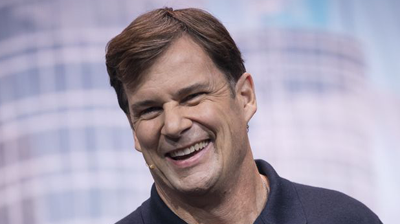
The low level of taxation has been key in the surging demand of electric vehicles (EVs) in the past year, and according to Paul Hollick (pictured above), chair of the Association of Fleet Professionals (AFP), something similar needs to happen in the light commercial vehicle (LCV) sector.
Hollick said: “We’ve seen how the 0% tax rate has been decisive when it comes to driving company car driver interest in the EV market, and as it has become more widely known, demand for EVs has increased exponentially.”
He explained that there is potential for a similar effect in the LCV market, despite the fact that drivers in this space typically have less control over what they drive compared to company car drivers.
“We are now in a position where a choice of electric vans are coming onto the market to meet a wide range of needs and for which the whole life costs look competitive, based on initial figures. What we need now is greater awareness,” said Hollick.
“Certainly, as a trade body, this is an area that we are looking at in detail. Several of our larger corporate members are committed to large scale adoption of eLCVs and we are monitoring their experiences with interest.”
The crucial whole life cost
According to the AFP, it is crucial to the adoption of electric vans that fleets measure their running costs on a “whole life cost, pence-per-mile basis” rather than looking at the capital cost.
Hollick said: “The arrival of EVs has highlighted the surprising number of businesses that still acquire vehicles largely based on the purchase price. This puts EVs at a disadvantage because they cost more to buy but less to fuel and maintain.
“We’re doing quite a lot of work in this area, especially through our new EV training course, which takes place for the first time in March, showing how to integrate these vehicles into choice lists and buying strategies alongside petrol and diesel alternatives.”
Ford set to electrify commercial vehicle market
Alongside this news, Ford Motor announced that it is seeking to grow its business customer base as part of its $11.5 billion (£8.27 billion) investment in EVs.
The OEM has already launched a fully electric van, the E-Transit, which is hoped to help some of its commercial customers transition to EVs.

Jim Farley (pictured above), chief executive officer of Ford Motor, explained: “This is a big deal for us. Our investment in commercial vehicles is one of the things that differentiates us in the marketplace. We are planning on electrifying our commercial vehicle offering. We’re 50% of the market in the U.S. for commercials.”
The E-Transit was designed to be an all-electric work van for companies that provide delivery and maintenance services such as Amazon, and UPS. This is particularly useful with the prevalence of Ultra Low Emission Zones in the UK which have hampered businesses in the past who rely on internal combustion engine LCVs as part of their business model.
Leveraging its 14.6% share of the UK commercial vehicle market (as of Q4 2020), Ford is determined to maintain its stronghold on the sector as businesses move towards ditching internal combustion engine vehicles for EVs. According to it’s Q4 2020 results, the OEM is the “number one commercial vehicle brand for the sixth consecutive year across EU 20 markets and for 56 years in a row in the UK.”
Farley concluded: “We sell over a half million Transits a year around the globe, and we’re going to electrify it.”


